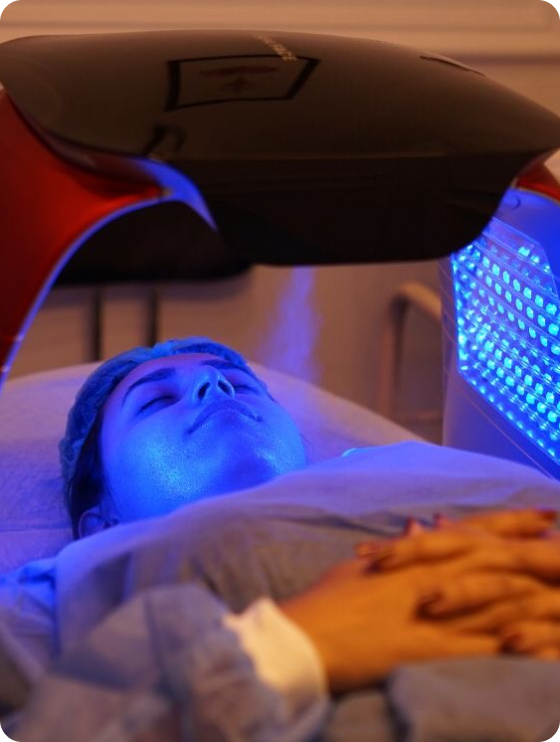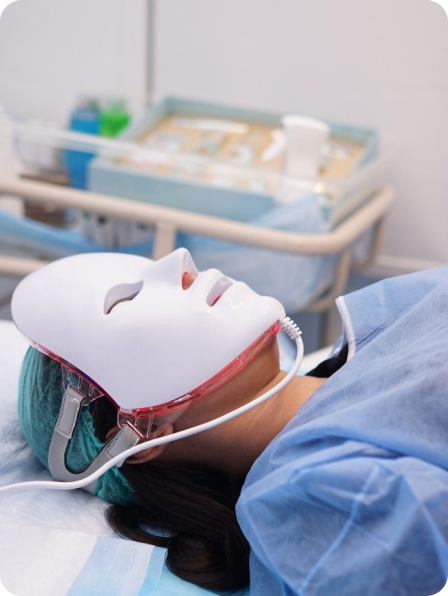Peels for Face and Body
Lorem ipsum dolor sit amet, consectetur adipiscing elit, sed do eiusmod tempor incididunt ut labore et dolore magna aliqua. Ut enim ad minim veniam, quis nostrud exercitation ullamco laboris nisi ut aliquip ex ea commodo consequat.
Peels for Face and Body
Chemical Peel
Chemical peels remove the top layers of skin with a chemical solution. Skin regrows smoother. You may require multiple light or medium peels to see results. Chemical peels address face wrinkles, discoloration, and scarring. You can do them alone or alongside other cosmetic operations. The depth might range from light to profound. Deeper chemical peels yield greater benefits but take longer to heal.
How do you describe a chemical peel?
Using a chemical solution, chemexfoliation or derma peeling improves skin look. In this therapy, a chemical solution damages your skin layers. Later, the skin peels off to show younger skin.


How it is carried out
Chemical peels revitalize skin. You can choose a chemical peel with three depths to address your concerns:
- Refreshing chemical peel. Through the use of a light chemical peel, the epidermis is removed in a gentle manner. When it comes to treating dryness, acne, uneven skin tone, and fine lines and wrinkles, this is the recommended treatment. A little peel could be applied to your skin every two to five weeks.
- A medium-depth chemical peel. The epidermis and certain deeper layers of skin can be removed by the use of a gentle chemical peel. It reduces acne scars, wrinkles, and skin tone concerns. The therapy may need to be repeated to achieve the desired result.
- Deep chemical peel. An additional deeper chemical peel destroys skin cells. For deeper wrinkles, scars, or precancerous growths, your doctor may recommend one. You won't need repeat steps to get results. Chemical peels don't address deep scars, wrinkles, or sagging skin.
- Your dermatologist determines peel depth. Your skin condition and treatment goals will determine this mutual choice. Deep scars, facial lines, sags, bulges, and severe wrinkles don't respond well to chemical peels. If you have these concerns, carbon dioxide laser resurfacing, face, brow, eye, or soft tissue fillers are preferable cosmetic surgery choices. Skin surgeons can assist you choose a treatment.
Are chemical peels good for all skin types?
Superficial peels work on all skin types. However, darker skin tones are more likely to darken after treatment. We term this post-inflammatory hyperpigmentation. If your skin is naturally darker, your dermatologist may recommend less aggressive treatments to minimize hyperpigmentation.
Also, you might want to think again before getting a chemical peel if:
Also, you might want to think again before getting a chemical peel if:
- Experience unusual skin scars in the past.
- Give your scars a little more color.
- Experience increased skin sensitivity as a result of a medical condition or medicine you are taking.
- During the healing period, I am unable to avoid sun exposure.
Results
A mild chemical peel improves skin texture, tone, and fine wrinkles. Multiple treatments improve subtle benefits. Moderate chemical peels smooth skin. Your skin will look and feel much better after a deep chemical peel. Might not last. New wrinkles and skin color can result from age and sun exposure. Each peel momentarily increases solar sensitivity. Your doctor can advise you on sun protection duration.


